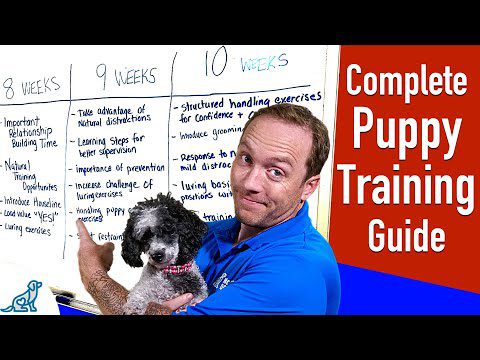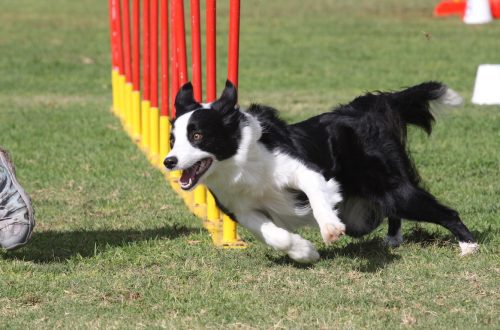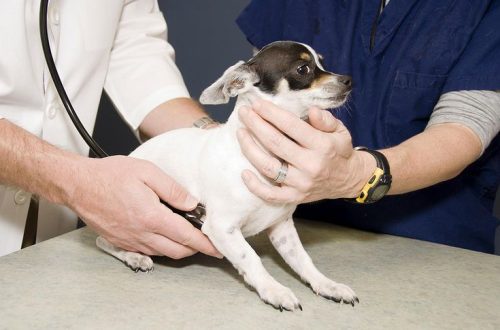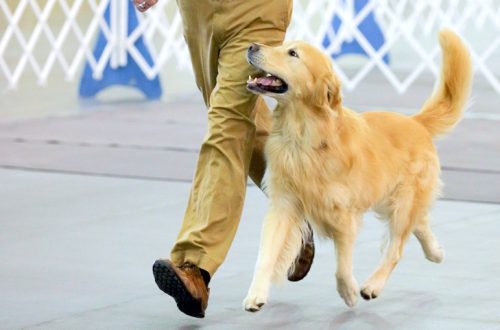
Training and initial education of a puppy
Contents
Where to start?
First of all, choose a nickname for the dog and teach your pet to respond to this name and your voice. You should not give your puppy complex long nicknames that are difficult to pronounce. It is better to choose a shorter and more sonorous version that is comfortable in pronunciation and understandable to your dog. It is easy to teach a puppy to a nickname – it is enough to call his name at each call and reinforce this action with a treat, stroking or playing. Over time, the nickname will become a conditional signal for the dog, to which it will respond, showing attention to the one who pronounces it.
Teach your puppy about hygiene
The first time walking with a puppy is undesirable. It is recommended to stay at home until the end of the vaccination procedures, so designate a place for the puppy to go to natural needs during this time. It can be an absorbent diaper, an old towel or a tray. You need to place them near the front door. Push the awakened, played or eaten puppy to this place or carry it in your arms. Wait for the puppy to do his chores and then don’t change the diaper or clean the litter box for one day. The smell will attract the puppy the next time, which will allow him to quickly get used to going to the toilet in one place.
As soon as the puppy is allowed to go for a walk, the tray or diaper should be removed. Take your puppy out for walks as often as possible. Then he will quickly get used to going to the toilet only on the street.
Train your puppy
As your own place that the puppy should have, you can choose a bedding, a soft mattress of a small size, a couch, a soft booth, a cage or a container. The main condition for the choice is the comfort and convenience of the pet.
Place a place for the puppy in a cozy corner of the house or apartment, it should not be in the kitchen, not on the aisle and away from the heating devices. Each time you take your puppy to a place or send him there, reinforce his actions with treats and affectionate words. If the puppy settles down to rest in other places in your house, gently take him to the place, stroke and say a few kind words.
The place for the dog is her little house, where she should be calm, comfortable and safe. It is to this perception of the dog of its place and you need to strive.
Never punish a dog by sending him to his place, and even more so do not punish or disturb the dog when he is in his place.
Don’t make a dog a beggar
Many puppies begin to beg quite actively when family members or the owner are eating. Never, under any circumstances, feed your puppy from or near a table. Don’t do it yourself and don’t let anyone else do it. It is enough just once to treat the dog with something from the table during breakfast, lunch or dinner, as you will get a begging dog that will not only look at you with sad eyes and salivate near the table, but will also check what is left on it when you leave the kitchen.
Don’t provoke your dog into destructive behavior
Many puppies have fun using the shoes of the owner and other family members as toys. They taste furniture, electric wires, curtains, examine the contents of the trash can and flower pots. All this is due to the fact that the puppy needs play and active actions for development. Puppies are inherently explorers, and, as a rule, they are very fond of trying all the objects of their interest by mouth.
- What needs to be done to ensure that the puppy’s actions do not turn out to be a devastating disaster for your home? Here are some helpful tips:
- Raise the wires lying on the floor to a height inaccessible to the puppy;
- Put indoor and outdoor shoes in closets. If the puppy is interested in the curtains, lift them up to the windowsill for a while;
- Provide the dog with toys and take an active part in the game;
- If the puppy can already walk, make sure that the walk is not a slow promenade, but takes place in good dynamics and with dosed physical activity. Tired after a walk, the puppy will eat with appetite and rest, gaining strength. Under such a regime, he will not have time and energy for hooliganism.
Don’t let the puppy be the leader
- Almost all dogs exhibit dominant behavior as they grow older. This can be determined by doing the following:
- The puppy actively bites its hands, while showing imitative aggression (growls, gets angry, does not respond to the prohibition);
- He takes a place on the bed, sofa or armchair, and when you try to send him to the place he resists;
- Does not respond to the ban and tries to climb on the table in search of food;
- Actively resists and tries to bite when examining his ears, teeth, rubbing his paws, combing;
- He growls and guards his food, does not allow him to take a bowl in his hands;
- The puppy tends to run out of the house or apartment before you, not paying attention to prohibitions;
- Actively tries to impose communication on you, interferes with rest, tirelessly pesters, barks, does not respond to commands;
- Behaves too independently on a walk, does not fit on the command “Come to me”, runs away.
Your task is to deprive the puppy of the attributes of a leader and try to make him perceive you as a leader and obey unquestioningly. Only under such conditions can you stop dominant behavior and eliminate the problems of raising and training your dog in the future.
What to do?
When the puppy tries to bite your hand, say out loud: “No”, “No”, “Stop”, “So”, “Shame on you” (there are a lot of options) – and sharply slap the puppy in the face. When you try to re-bite, repeat the slap, but with more force. As soon as the puppy stops unwanted actions, stroke, give a treat, play with him.
As sharply as possible and with thunder in your voice, drive the puppy away from those places where the owner and members of his family should rest. Feel free to slap him on the bottom with a wet rag or towel. There will be no injury, but there will be discomfort. Send the puppy in a calm voice to the place, there encourage him with a treat, stroke and praise with an affectionate voice.
Encourage the puppy to allow himself to be examined calmly and without resistance. You can start by simply touching your dog and giving him a treat. Gradually, the procedure must be complicated, adding an examination of the ears, claws, teeth. Reward the puppy with a treat each time if he is calm and does not resist. With active resistance, when neither affectionate persuasions nor treats help, grab the puppy by the withers and shake it well, then continue the inspection procedure, and be sure to encourage calm and submissive behavior.
Don’t feed your puppy from the table.
Do not allow him even the slightest manifestation of aggression when eating. Stay close to the puppy while feeding. Take food out of the bowl and then put it back in the bowl (feeding ready-made food allows you to do this repeatedly). Teach your puppy to slow down a bit before letting him into the food bowl. To do this, before you put the bowl of food, give the command “Sit” and after a short pause, allow the puppy to eat. Let all family members feed him in turn – from children to the elderly. When a puppy tries to growl, do not be embarrassed and do not show fear, because it is just a puppy, and it cannot cause any serious injury. Your confident behavior will forever let the dog know who is the master of the situation.
When going out for a walk, do not let the puppy rush out of the door, restrain him with a leash and a sharp “Next” command. Teach your puppy to go for a walk in a disciplined way, to do this, show stamina, and if necessary, strength.
When trying to impose communication on you, do not succumb to provocation, do not react to the puppy’s actions for a while.
Sometimes indifference and lack of reaction is the best way to avoid provocation from the dog.
For very obsessive behavior, offer the puppy to follow a command, and then send him to the place, having previously encouraged him. Obsessive behavior can also be stopped by a ban, driving the dog away from you or causing it a small, but still a nuisance. The dog must associate this trouble coming from you with his obsessive behavior. From now on, she will think well before she decides to prevent you from doing your own thing.
From the first days of walking with a puppy, practice the “Come to me” command and establish the right relationship with him. Communicate with the puppy on a walk, offer a game, carefully monitor the puppy’s behavior and correct it in time. This will help you gain the necessary knowledge and skills that will later help you establish the right contact with the dog and properly educate it. At the same time, the puppy will gain experience in communicating with other dogs and will acquire the necessary skills for proper social behavior and obedience.
When the puppy is 4 months old, be sure to take a course of educational training at a cynological school or on a training ground.





